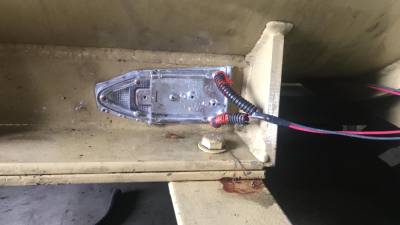User Tools
Sidebar
Generator Anti-Condensation Heater
Generator windings absorb moisture in high-humidity environments. Moisture weakens the insulation and leads to short-circuits, requiring replacement or rewinding.
To prevent this, the generator windings need to be kept slightly warmer than the ambient temperature.
New windings should have over 100 Meg-ohms from any winding to the frame. This should be measured with a meg-ohmmeter using a maximum of 500VDC. 1)
WARNING: All leads, voltage regulators, etc, must be disconnected during a meg-ohm/insulation test, both to avoid damaging other equipment and to get accurate results. The high voltage from a meg-ohm meter will damage the voltage regulator and potentially other measuring/control equipment.
Used generator windings may be between 10-50 Meg-ohms. If the measured insulation resistance is below 3 Meg-ohms, the generator should be taken out of service and the windings dried by a suitable method. The generator manufacturer can best advise on this. 2)
DANGER: Starting a generator that has insulation resistance less than 2 Meg-ohms and with a voltage regulator connected can cause a short circuit in the windings resulting in permanent damage in less than one second, even without a load connected.
Factory-supplied anti-condensation heaters operate at approximately 110C+ but are often mounted on a bracket in front of the exciter. They depend on the heat conduction through the bracket to the generator frame. This does not seem to keep the actual windings warm enough to prevent moisture accumulation in the winding insulation. 3)
We tried using regulated heat tape, but the heat output decreases with temperature, and at 90F ambient temperature the output is below 1W/foot – providing less than 25 watts total output.
Clothes Iron Heater Solution
- Strip the base plate from two 1000W / 230VAC clothes irons
- Drill & bolt the bases to each side of the generator mounting foot/frame – avoid the heating element.
- Connect both irons in series and then to 230VAC.
- If possible, save the indicator light from the iron and mount it so that it is visible when power is connected to the heater to confirm proper operation.
 Operating at half voltage reduces power to 25%
Operating at half voltage reduces power to 25%
- Two 1000W irons in series @ 240V = 500W total, 250W each.
- If 120VAC is available, wire the two irons directly to 120VAC.
- 1000W @ 240VAC = 250W @ 120VAC
Top of generator frame is comfortably warm 12 hours after shutdown. This is ideal.
- Top of generator 95°F
- Bottom of generator 114°F
- Heater 175°F
Ideal mounting position would be in the center of the bracket so that less heat is conducted to the mounting frame.
Page Tools
Copyright © Alan Shea, 2011-2025

